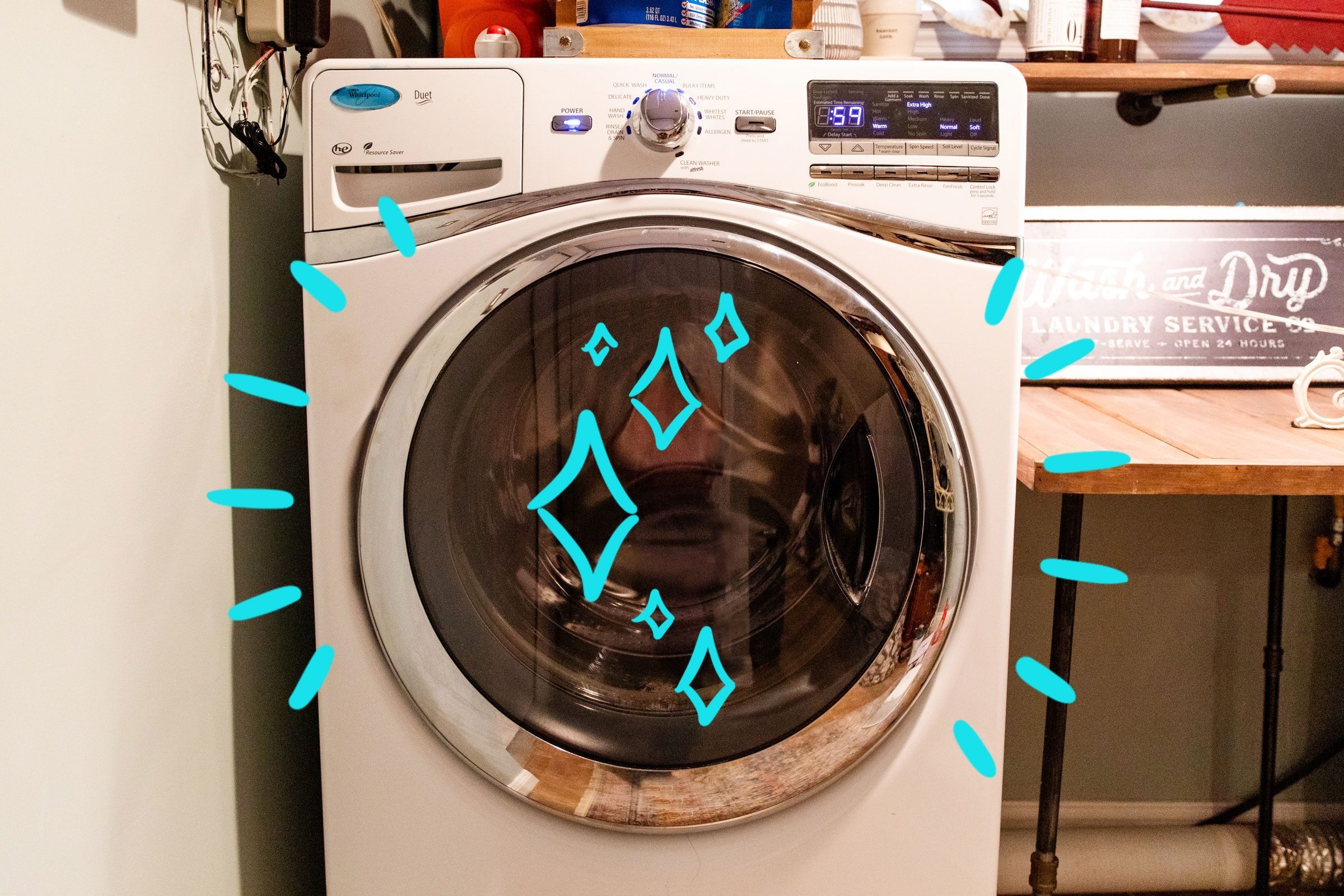
Keep laundry day running smoothly
You probably don’t spend a ton of time with your washing machine and/or dryer—which is one of the great things about them. For the most part, you just throw clothes in, twiddle some buttons and add some detergent, and leave them be until they’re done. But they’re also fairly complicated machines that can wear out over time and do require upkeep and TLC. If you notice any of these issues or disruptions of the way your washer or dryer usually works, don’t ignore it. Some of these issues may be quick fixes while others may require professional help—or even a new machine. But hopefully, you can avoid that by looking into these errors as soon as you notice them.
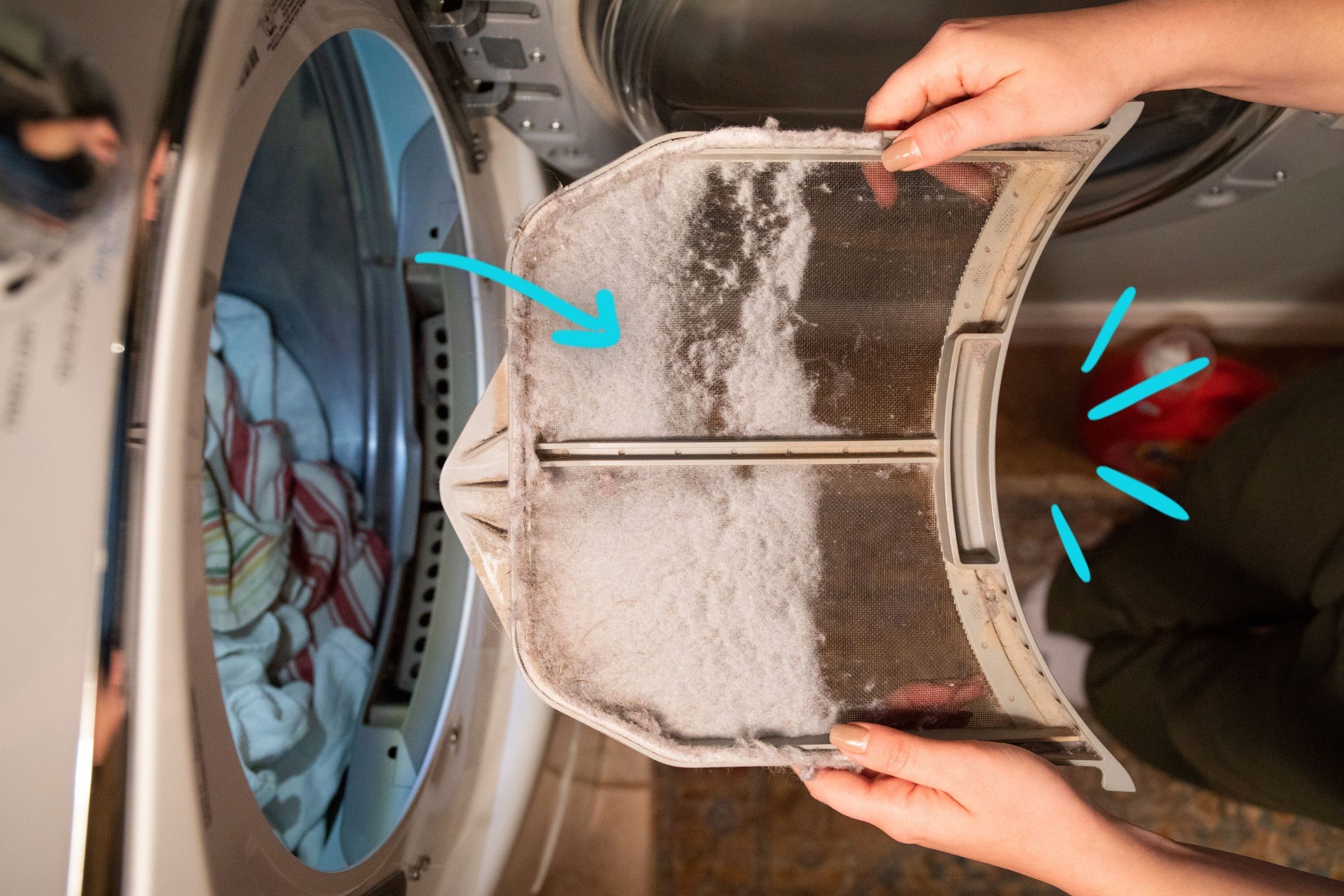
Blocked lint trap
The world of appliance issues is filled with confusing terminology and different parts. The “lint trap” of your dryer is the covering that catches lint and keeps it inside the dryer. “Cleaning it is an essential part of owning and operating a dryer,” says Tim Koster, founder of CleverCreations. “If your dryer does not dry your clothes as quickly as it once did, it can be a sign that the lint trap…needs to be cleaned.” Koster warns that, in addition to just keeping your clothes from getting fully dry, there’s another, even more, crucial reason to clean your lint trap often. “Lint is flammable, and when enough of it builds up, it can become a fire hazard,” he warns. Especially in combination with the reduced airflow, which can cause your dryer to get too hot on the inside.” He suggests taking a peek at the lint trap every time you use the dryer. If there’s buildup, clean it out.
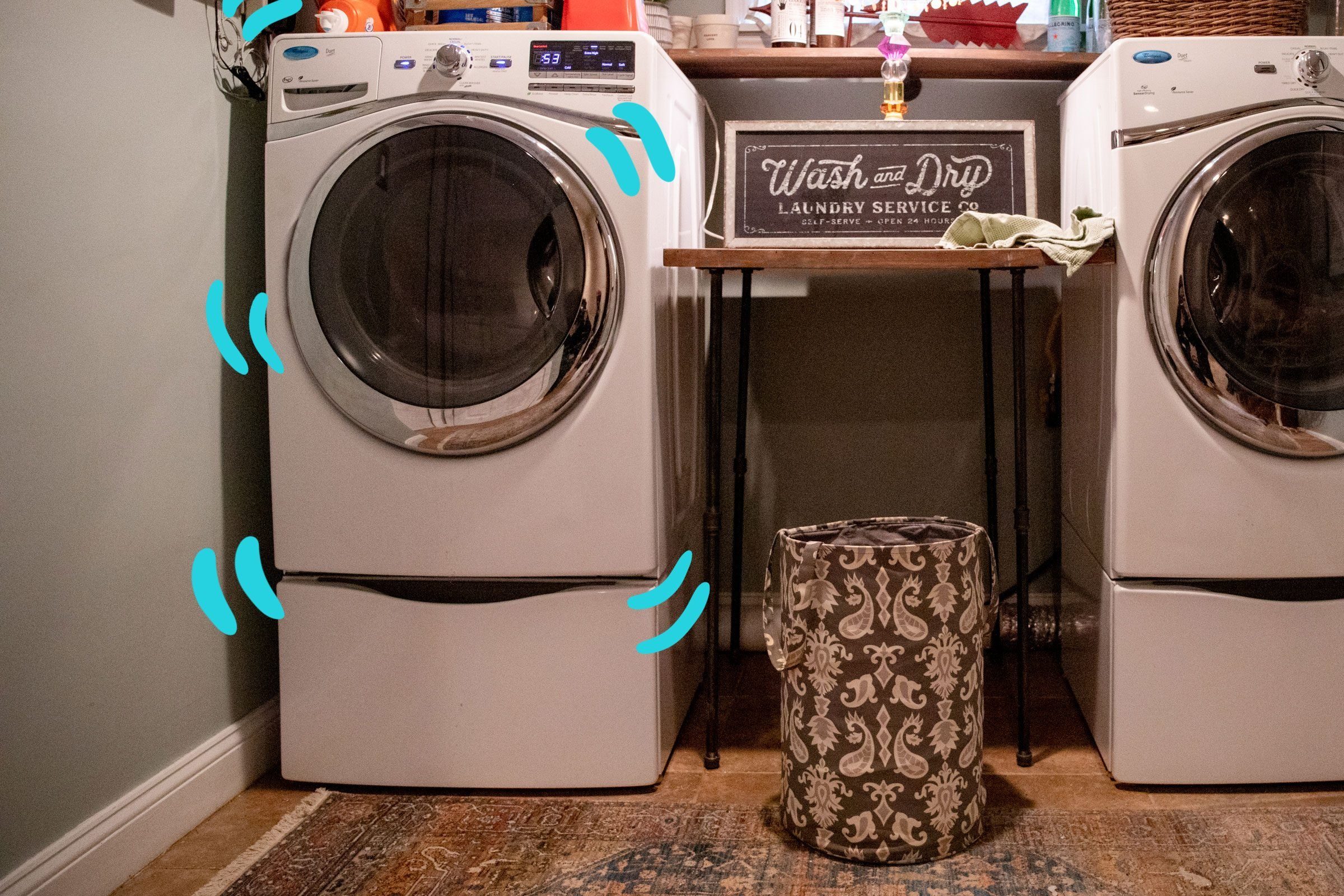
Vibrating strongly
Yes, your washing machine is supposed to move and shake a bit while doing a load—but something’s probably up if its intensity is noticeably higher than usual. “Like cars, washers have shock absorbers, to absorb the bumps that naturally come with large laundry loads,” says James Surrey, founder & Chief Editor at Review Home Warranties. If you notice this vibration, “it’s possible the shock absorbers may be damaged or worn.” He says that leaving this untreated could damage other parts of your machine, or even loosen the motor. Bottom line? “If the washer begins shaking really hard, it’s seldom a one-off,” Surrey says. “It’s time to call a repair technician.”
Find out the surprising ways you’re shortening the life of your washer and dryer.
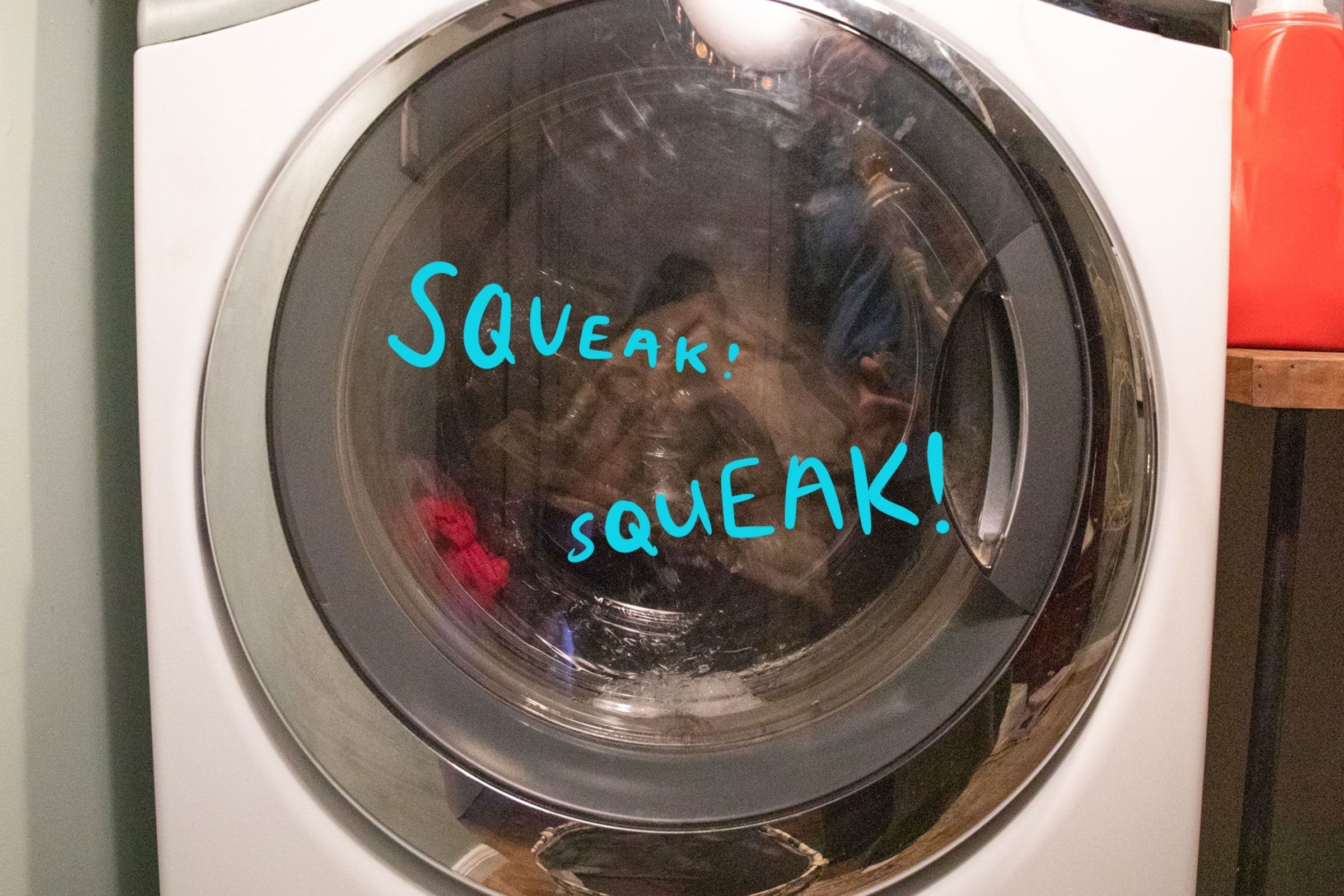
Squeaking noises
When it comes to appliances, odd noises are never good. “I’d say the biggest warning sign for washers and dryers is noticing a squeaking sound coming from either of them,” says Rex Freiberger, CEO of Gadget Review. “Even a mild squeaking is indicative of a problem that could lead to costly repairs if it’s left for too long.” He warns that this noise is because of parts rubbing together, potentially because the machines’ oil drying up. “When your washer or dryer agitates, mechanical parts have to move and rub together,” Freiberger says. “Without proper lubrication, they’re just wearing each other down.” He says it’s only a matter of time before they break.
Find out what these strange car noises probably mean.
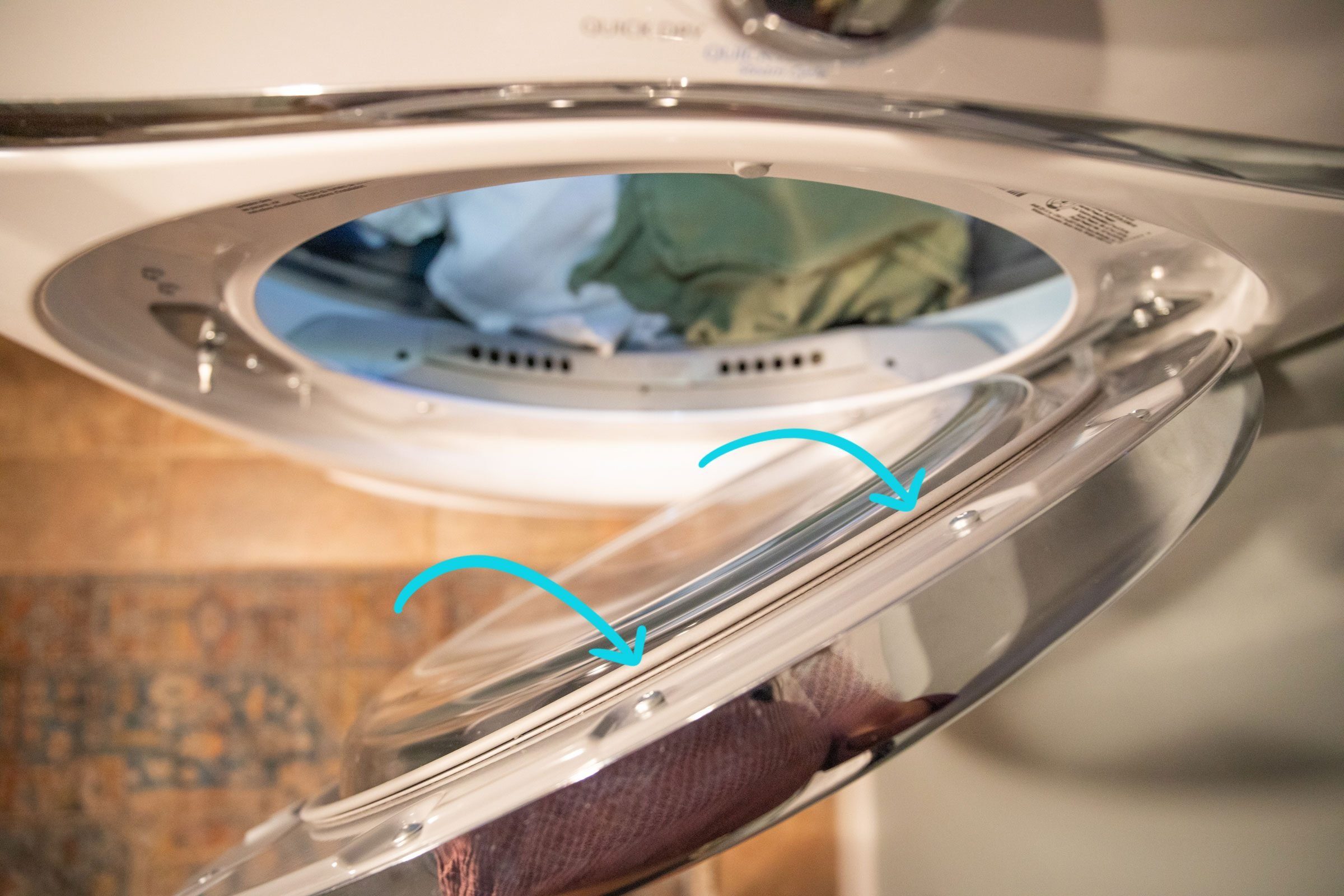
Dryer door seal wearing down
It’s not just the machinery of the dryer that can get run down—the door can, too. “Dryer doors take quite a pummeling over time, as all we have a tendency to slam the door shut,” says John Bedford, founder of Viva Flavor. “Keep a close eye on the quality of the seal.” If the dryer’s seal isn’t holding the door completely shut, heat can leak out, which will force the machine to generate more heat. Needless to say, this isn’t good for it. So what should you do? “It’s a simple thing to keep an eye on, and seals are very easy to replace as well,” advises Bedford.
Here’s how to tell if you’re using too much laundry detergent.
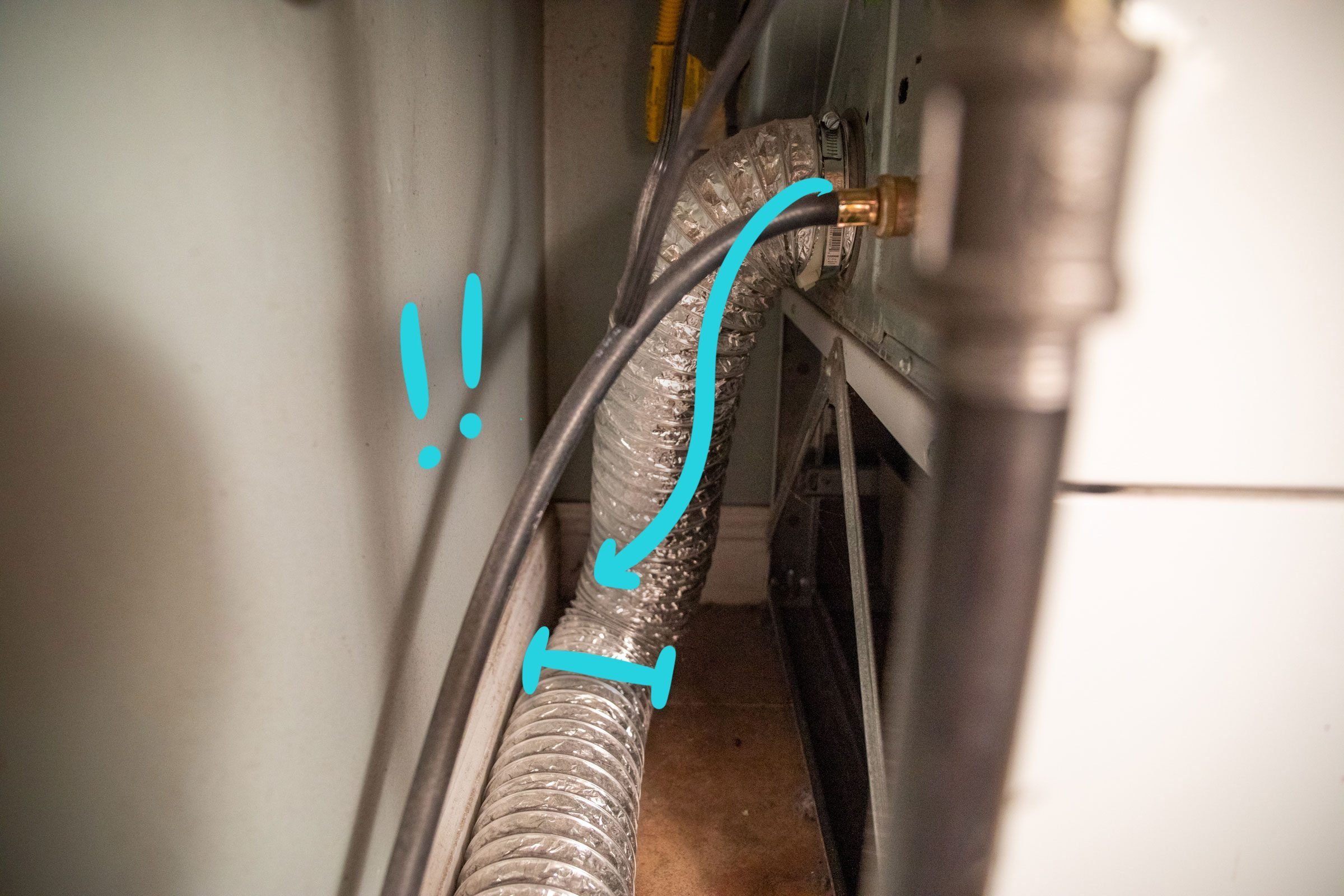
Exhaust pipes blocked
This, unfortunately, isn’t a problem that’s that easy to see. It involves lint buildup in the dryer’s exhaust pipes, which can also be behind a dryer not drying your clothes properly. “The areas where the ventilation bends and turns are usually a meeting point for all the lint that passes through the lint trap. With time, it is possible for lint balls to form inside these areas,” says Natalie Barrett, cleaning expert and quality supervisor at Nifty Cleaning Services. If you notice that the dryer isn’t fully drying your clothes, this could be the problem. “The easiest way to avoid such unwanted scenarios is to regularly clean the duct,” Barrett says. “I have found that vacuuming inside the pipes does a great job of maintaining them in proper condition.” She says you can also vacuum the dryer’s exhaust hood “to go the extra mile.” And if you suspect it might already be a problem, you can replace the pipe, ideally with ones that aren’t bent or twisted.
Before you toss it out, find out how to use dryer lint in your backyard and garden.
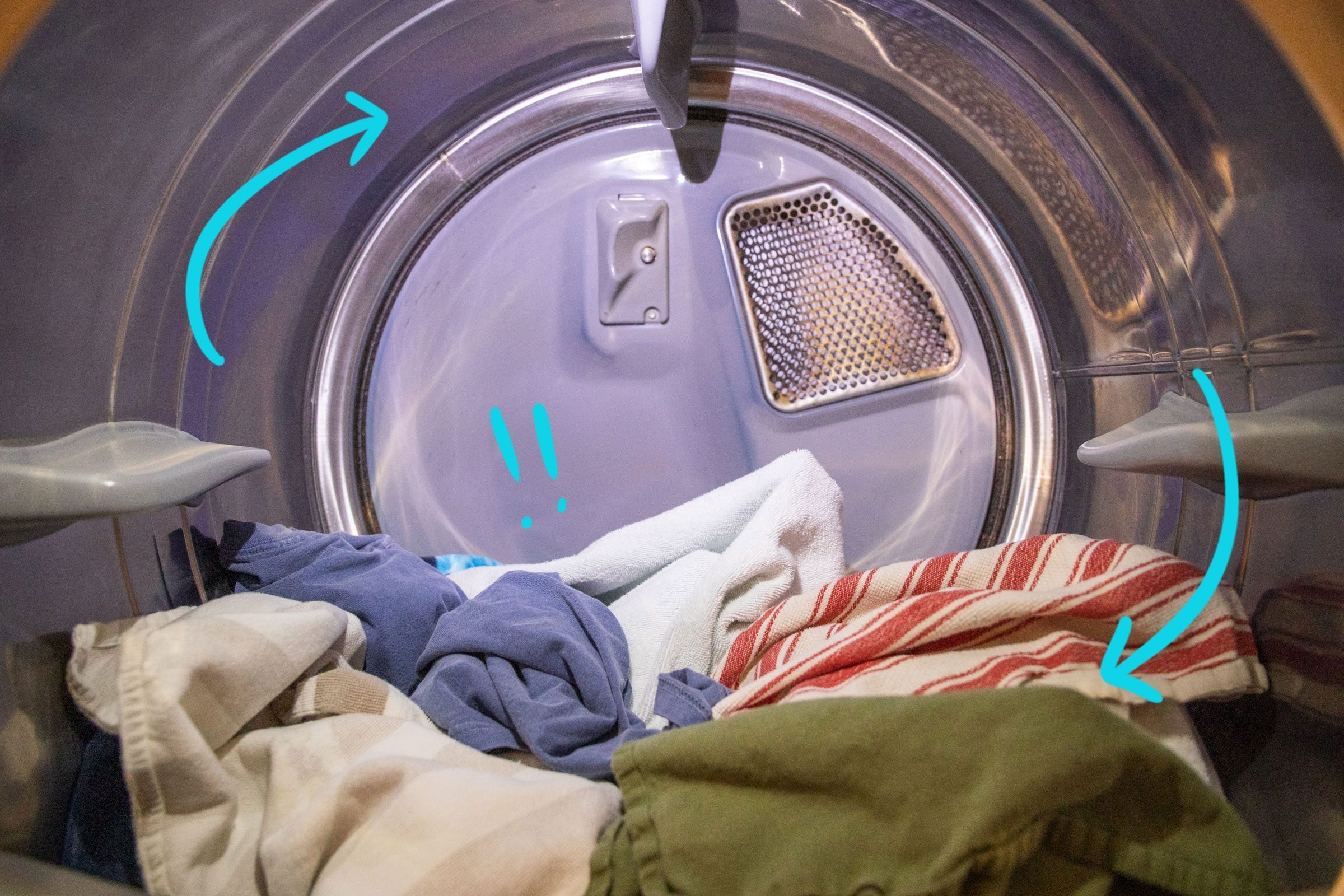
Dryer not rotating
Rotating, of course, is the dryer’s “one job.” If you see the dryer not rotating, or suspect that the belt isn’t moving or is slipping, consider giving a technician a call, Barrett says. “The dryer rotates with the help of a rubber belt. With time this component needs replacement,” she advises. Keep an eye on the rotation of the dryer to make sure it’s consistent.
These brilliant laundry hacks will save you time, money and effort.
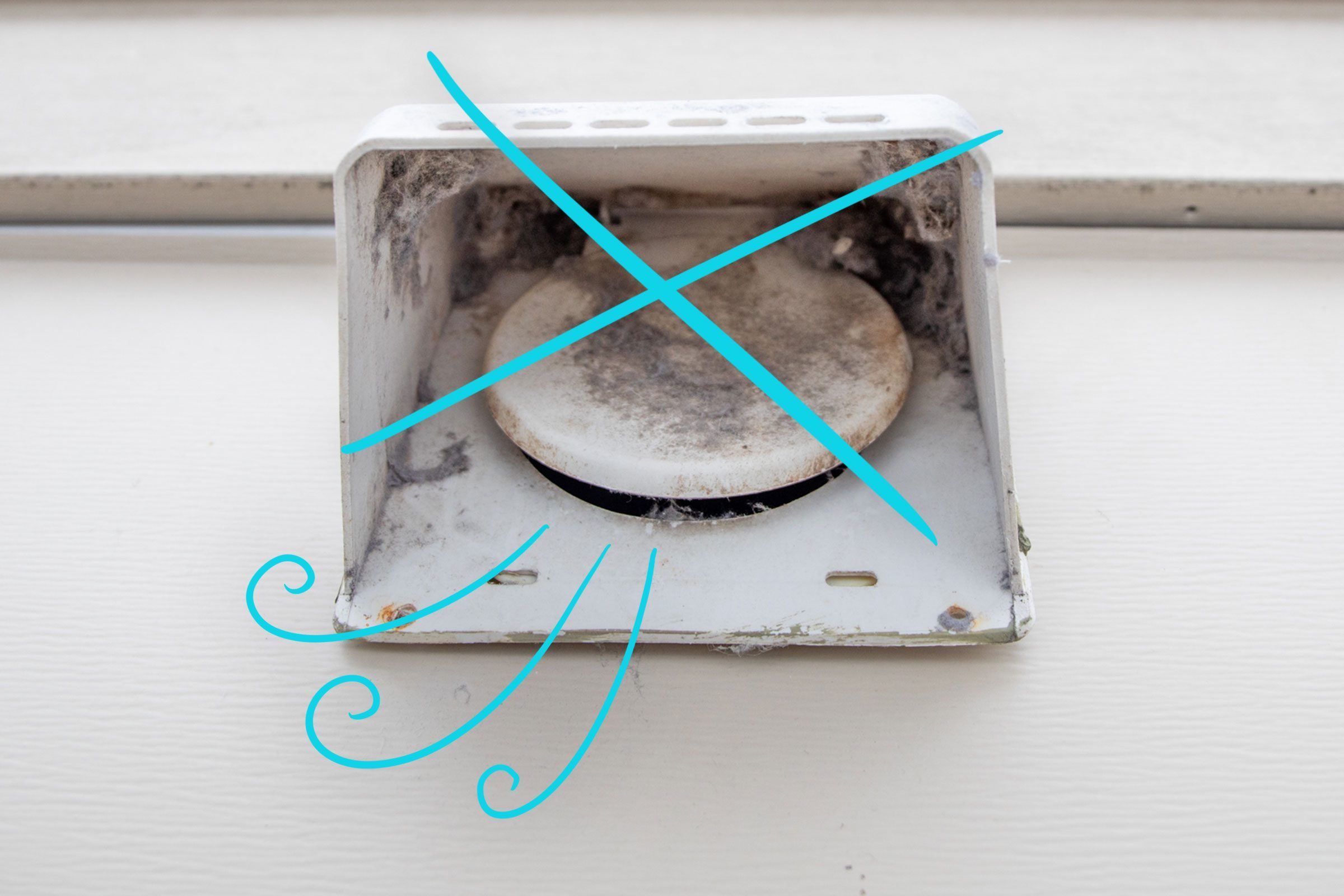
No airflow
This is more of a complicated problem and one that’s not super easy to detect. In fact, it takes a bit of extra effort to check for, but you might want to do it every once in a while. It involves checking “the vent flap or hood on the outside of the house” to make sure there’s air flowing while the dryer is on. “Make sure that you feel a strong flow of air coming out when the dryer is running,” Barrett says. “If not, try cleaning out the vent with a straightened clothes hanger.” You can also remove the duct and clean that out, as that can contribute to reduced airflow as well—especially if you notice that the vent doesn’t seem to be clogged.
Here are more home hacks that are sure to come in handy.
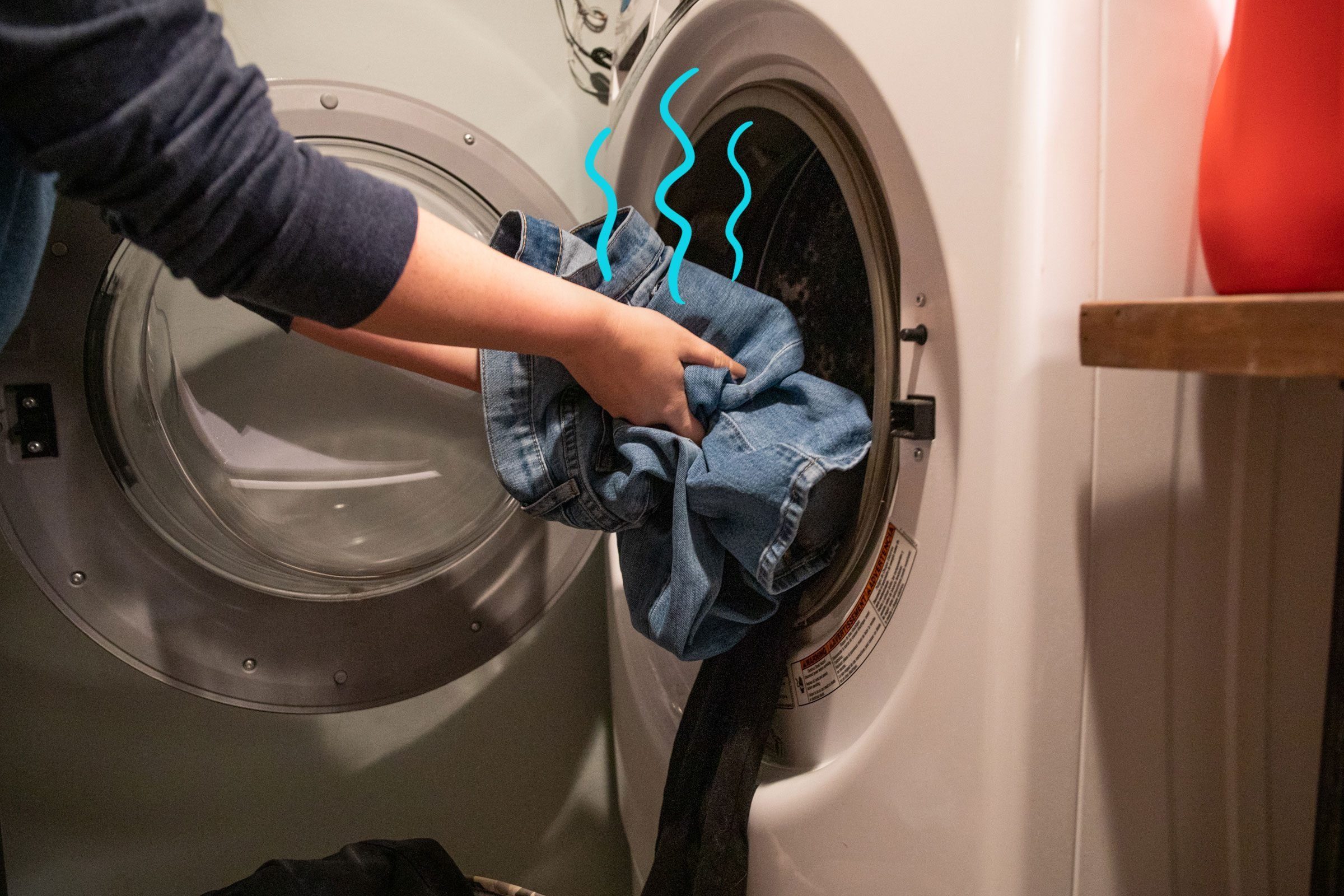
A “hot” smell
Needless to say, a burning smell around your appliances is never a good thing. “An easy way to tell that your washer is overheating is if you smell a scent of something getting hot or burning when you use the machine,” Koster says. Both washing machines and dryers can get too hot, and it happens for different reasons. “It can happen when you overload the device, for example,” he adds. “Washers are rated to handle a certain load, and if you exceed it you can cause the internal components to wear out. At first, this might not be a problem, but over time these worn-out components will cause more and more friction. In turn, this increased friction leads to overheating.” He recommends operating within the washer’s load limit and also making sure to allow for some time between loads so that the machine can cool down.
Learn how to separate laundry for the cleanest, brightest clothes.
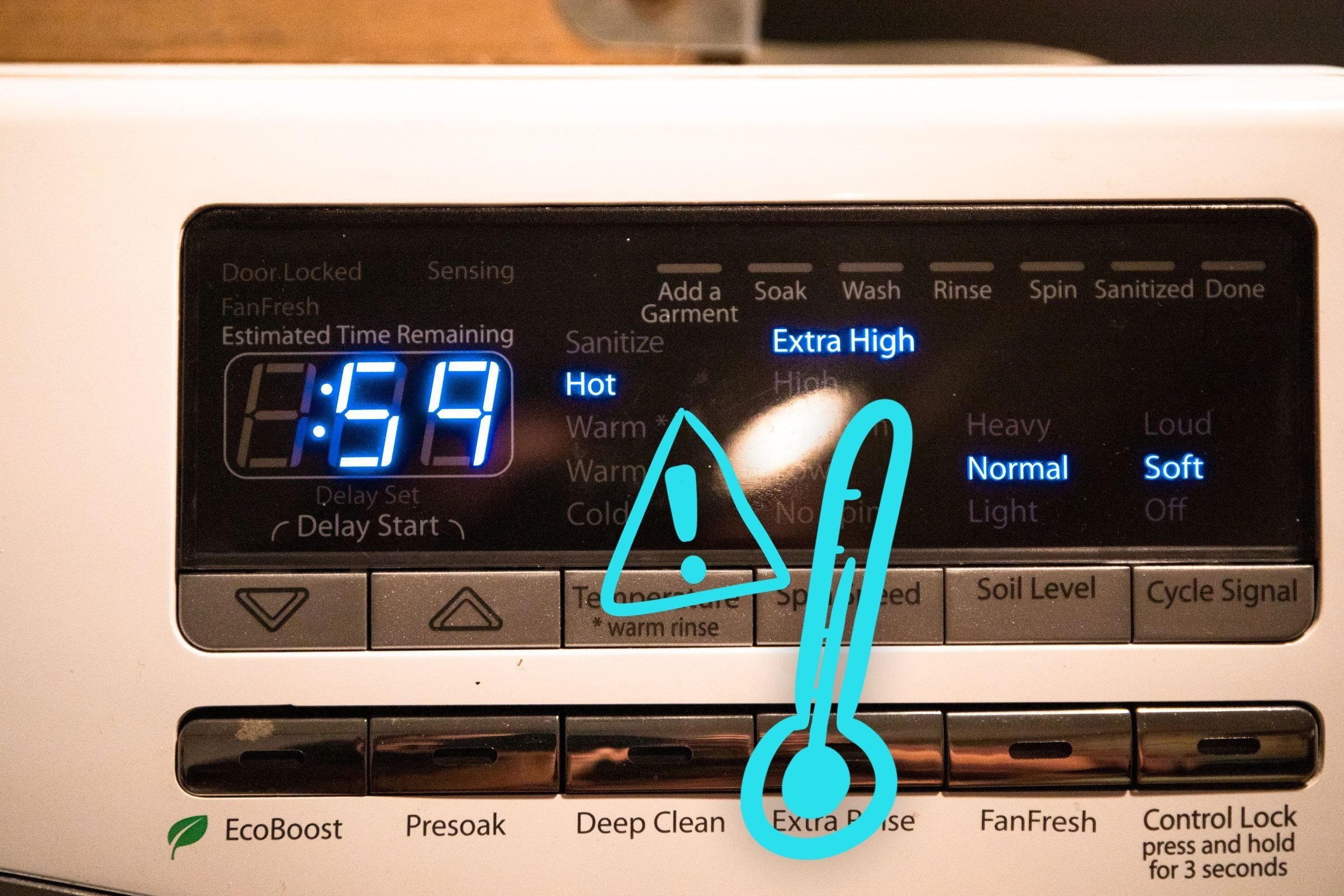
Not hot enough!
Another reason your clothes might not be drying properly is that your dryer’s not heating up enough. “If you find that your tumble dryer has trouble heating up, [or is] blowing cool air…don’t ignore these,” says Stephany Smith, part of the tumble dryer repair team at Fantastic Services, which specializes in appliance installation and repair. “They are telltale signs that your appliance needs diagnostics.” And, like most of these other washer/dryer problems, if your clothes aren’t drying properly or the cycle is taking longer than usual, it could be a temperature issue as well as any of these other issues. Smith suggests calling an expert to get to the bottom of the problem, especially if you can’t identify exactly why the dryer isn’t working.
Here’s what you need to know about laundry stripping.
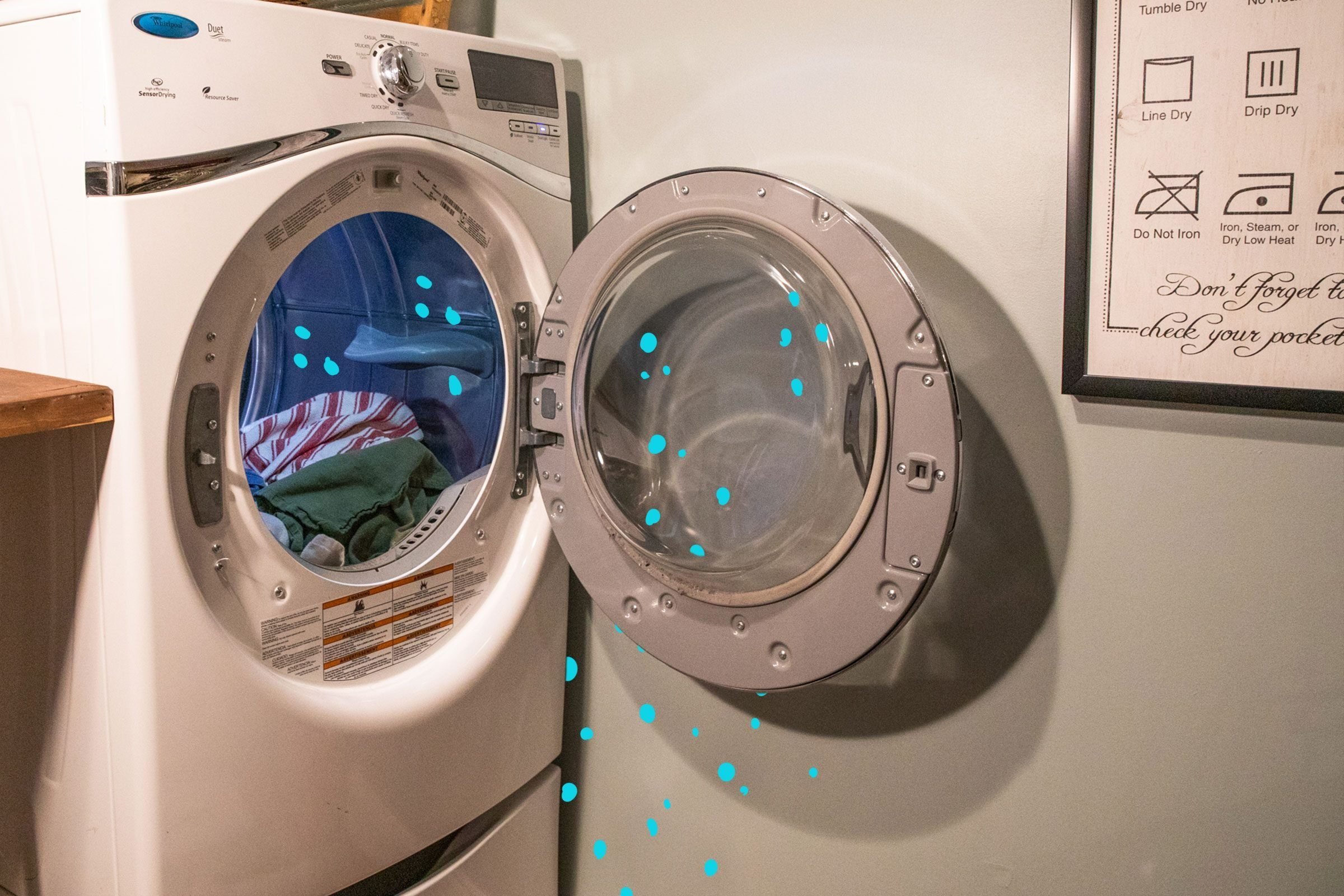
Mildew and mould around your dryer
This is one to look for especially if your dryer is in an enclosed tight space or up against a wall. “Condenser tumble dryers can be installed just everywhere in your home, but if the space is less than ten square meters, or [has] poor ventilation, expect condensation, mould, mildew, and even flaking paint to appear,” Smith says. Even just a smell of mould can be indicative that you have a bigger problem. When you’re installing a new machine, “make sure to place the machine in a well-ventilated and large enough room,” Smith says. She suggests measuring a minimum of 2 centimetres between the edges of the dryer and all of its surroundings.
Find out how to clean your washing machine, step by step.
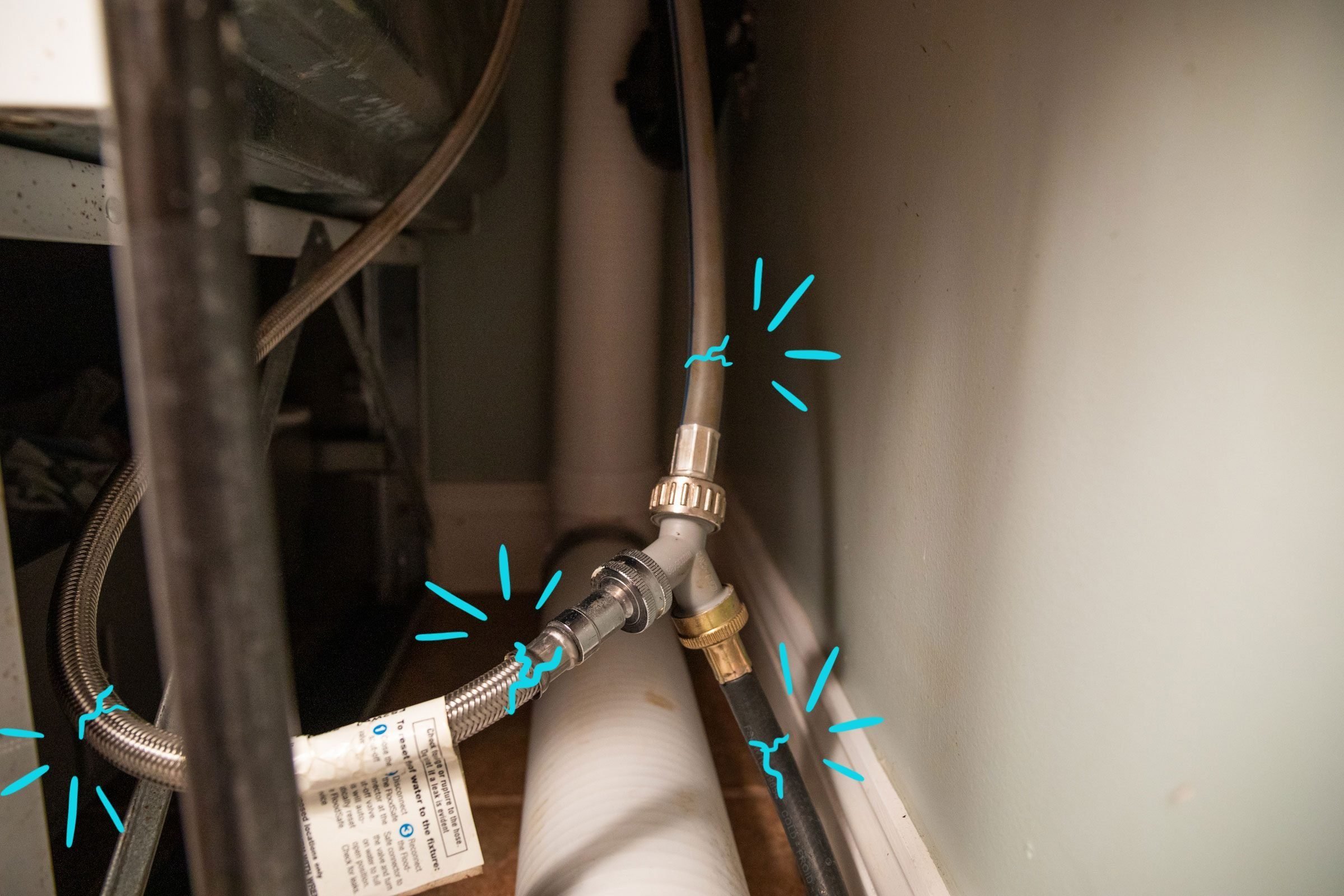
Hoses deteriorating
In addition to the dryer itself, the hoses that feed it can show signs of wear, too, and you should keep an eye on them as well. “An eroded drain hose can cause a water damage situation, costing you a lot of nerves and money down the drain,” Smith warns. To prevent this, she says to “look for bubbles, discolouration, and blisters along the hose and replace them right away if you notice damage.” She says that once you have new hoses, it’s a pretty straightforward repair, but you should hire a pro if you’d rather be safe than sorry.
Learn where the filter on a washing machine is (and how to clean it).
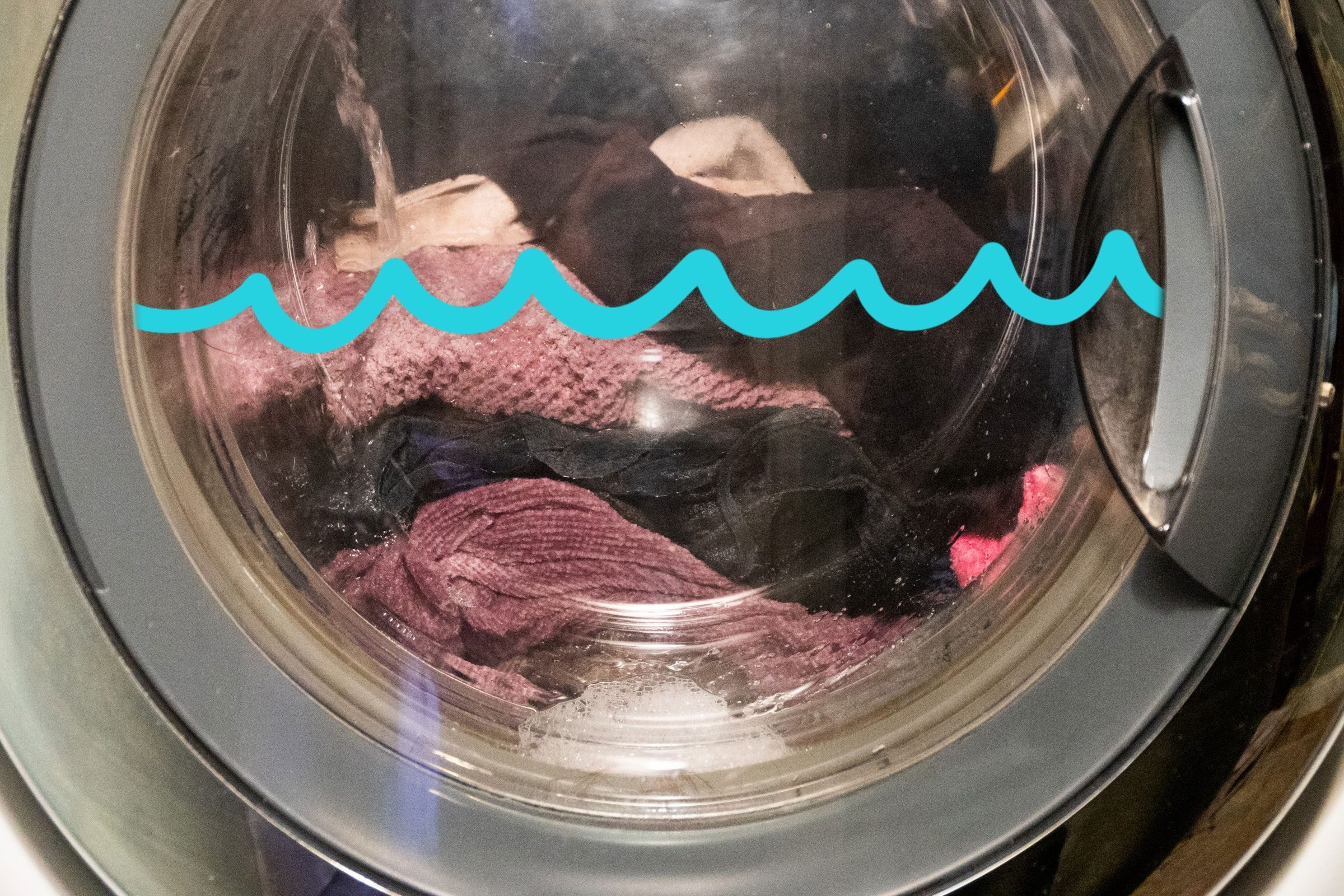
Low water flow or water flow issues
You know washing machine leaks (even small ones) are an issue, but you should also keep an eye on the way water behaves inside your machine. “If it’s not filling up the way it used to be, there may be problems with the hose, faucets, filters, inlet valve, or water control unit,” says David Cusick, Chief Strategy Officer at House Method. That’s a whole lot of potential problems, so you might want to call in an expert to get to the bottom of it. Jordan Collins, home appliance expert at Two Lions 11, adds that you’ll also want to keep an eye on how the water in the washing machine empties. “If you spot that, once finished, the washing machine still has water in its drum, be sure that there’s a fault,” he says. Specifically, there’s probably a drainage issue or blockage. And, finally, if it seems to be draining too fast, that could signify that you have a leak on your hands.
Here are six things professional plumbers never do in their own homes.

Clothes not getting clean
Is your washing machine failing at its one job? “There’s nothing more frustrating than waiting all that time for your washing machine to finish its cycle, only to find out that your clothes are no cleaner than when they went in,” says Arvid Linde of OnBuy.com. Luckily, though, he says that this could be a quick fix: specifically, a clogged detergent tray. “Over time, bits of residue can combine together, making a sticky mess that prevents your detergent and softener from travelling down to your clothes,” Linde specifies. “To fix this, simply clean out both your detergent and filter drawer before loading up your laundry and starting the next wash cycle.” With any luck, that’ll fix the problem. You should also make sure you’re not overstuffing the machine. That can short-change the clothes-cleaning process too.
Next, find out the 13 laundry mistakes everyone makes.